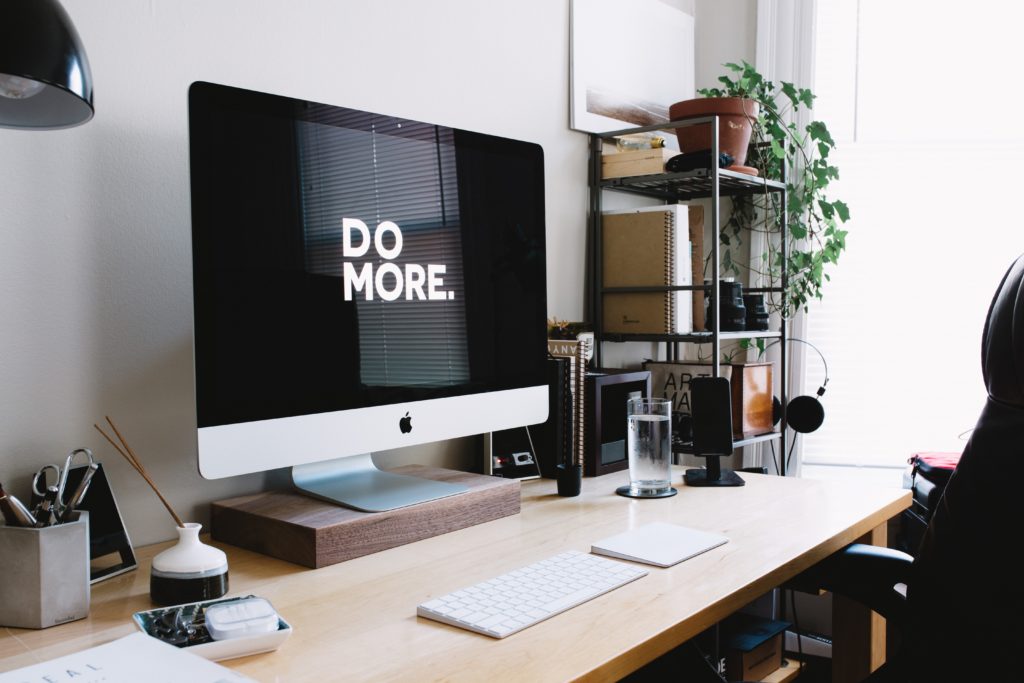Remote Working on The Increase
In 2016, Gallup reported 43% of the U.S. workforce worked remotely at least some of the time. That’s up from 39% in 2012. We had every reason to believe that percentage would steadily grow in the coming years as technology has made it more viable for more workers in more industries. Then there was COVID-19.
There isn’t a person alive who hasn’t felt the impact of COVID. Young and old alike are having to change everything about how they live and work. From massive enterprises to mom-and-pop stores to non-profit organizations, everyone has had to rethink what a safe working environment looks like. Maximizing productivity while working from home isn’t as easy as it may sound.
Those incremental increases in at-home workers have now skyrocketed at a much faster pace. Global Workplace Analytics estimates that 56% of the U.S. workforce works in a job that is at least partially compatible with remote work. They estimate that up to 30% of the workforce will be working from home not just some of the time but the majority of the time by the end of 2021. Some of this has to do with COVID, but 80% of people said they wanted to work from home at least part of the time before the pandemic. Now, companies are giving them their wish and they may never return to a full in-office work week again.
Related: Remote Working Is Easier than Ever. Is It Right for You?
IBM reports similar findings. A survey of 54,000 people found that of those working from home because of COVID, 80% say they would like to continue doing so at least part of the time, and 58% say they want it to be their primary way of working.
Clearly, this remote working thing is going to stick, at least in many industries. Whether you are relatively new to this home office thing or you’ve been doing it for years, it can be challenging to work from home. While the thoughts of more flexibility, fewer expenses and distractions, and increased productivity are fantastic, working from home has a downside as well. Among many complaints, remote workers experience increased isolation, risk of overworking, and distractions, all of which play a major role in a less-than-ideal remote work experience.
We’d like to offer some advice on how to make the at-home office a place where you maintain optimal productivity, achieve work-life balance, and feel connected to your work, your peers and your company.
How to Maximize Your Productivity Working from Home
There are dozens, if not hundreds, of blogs out there offering tips for working from home. Sorting through all of the advice can be overwhelming, so we did it for you, added our own expert advice, and came up with the best suggestions we believe will help you achieve optimal productivity without sacrificing your work-life balance. Give this to-do list a try and see if you don’t experience a bump in efficiency and contentment.
Understand and set expectations
Hopefully, your employer has overcommunicated how this whole work-from-home thing is going to happen. They’ve equipped you with the technology you need to get your job done and have given you your assignments with timelines. If they haven’t, ask. You can’t be successful if you don’t know and being away from your management and peers can make it more challenging to know what you’re supposed to do and when.
Same goes for you. Make sure the people you report to and those who report to you are on the same page. If you manage people, overcommunicate what you need from them and when. It’s easy to get behind at home with all of the distractions, so establish timelines and deadlines if necessary.
Finally, make sure the people who may be at home with you understand your needs, too. Constant interruptions can quickly eat up your day, making you less productive and more stressed.
Create an ideal workspace
If you’re going to maximize productivity while working from home, you need a dedicated workspace that has everything you need – just as if you were at your desk at your company. Besides the obvious desk space, technology and peripherals, you may also need to work with your tech team and/or internet provider to ensure you have plenty of network bandwidth and connectivity to get your job done without interruptions.
Get comfortable in your workspace, too. Sitting in a hard dining room chair for hours a day isn’t going to do much for productivity and could end up costing you in chiropractic bills. PC Magazine says you should consider:
- Noise-canceling headphones if you’re working with others around
- A back pillow for lumbar support
- Raising your monitor or laptop to be at eye level
- Adjusting the light in your office for optimal video conferencing visibility
- A charging station near your desk
- Cable management so you can work without a cord mess
- Cleaning supplies, including microfiber cloths
- Air fresheners (candles, diffusers, etc.)
- Adding plants
- Preventing clutter
Your goal is to make your workspace somewhere you actually want to be. If your laptop is sticking to the waffle syrup your 5-year old dripped on the table or you’re in a room without windows or good airflow, you’re going to find all kinds of ways to get out of there and your productivity will take a hit.
Keep a routine
If you used to go to the office daily, your routine was likely different than what it is now. Exercising, getting ready, commuting, lunch, after-work activities, etc. was the norm. Keep it that way. We all do better with structure and a routine, so don’t make too many changes now that you’re working from home.
Northwestern Medicine says people without a routine tend to suffer from stress, poor sleep, poor eating, poor physical condition, and (here’s the kicker) ineffective use of time. According to Verywellmind, now is the perfect time to establish a routine, saying, “Even if you don’t typically thrive on a strict schedule, having a routine can be helpful in times of unpredictability, uncertainty, and stress.” Yes, please.
Work regular hours
Here’s the ugly truth about working from home: if you don’t set boundaries, you’re likely to work more hours than you did when you worked in a company office. Bloomberg says all of this COVID-related remote working has led to a workforce that’s “overworked, stressed, and eager to get back to the office,” noting that homebound employees are logging three extra hours per day. That’s likely not what you signed up for.
Make it known that you work your normal office hours – AND STICK TO IT. It’s easy to keep working through lunch, accept that early morning call, work late and even on the weekends when you have a deadline or feel overwhelmed. If you didn’t do it before, don’t start now. You’ll burn out faster and productivity will suffer.
Get ready for work
Yes, it’s great to work in your pjs. but don’t. Don’t just roll out of bed, grab a coffee and start working. If you normally exercised in the morning, do it. Shower, get dressed, enjoy breakfast and then get started. Formal work clothes may not be necessary, but getting “dressed” is more psychological than it is practical. It makes you feel like you’ve separated your home life from your work life, mentally preparing you for your day.
Take your normal breaks
Taking breaks is important. Studies have found that breaks can reduce or even prevent stress, help maintain performance throughout the day, and reduce the need for a long recovery at the end of your day. This means taking 10 minutes to refill your coffee cup or walking around the block; taking a full lunch break, even if you don’t leave the house; and building in time to socialize with friends, family, neighbors or co-workers. If you want to maximize productivity while working from home, don’t skip the breaks.
Stay connected
You need face time with your managers, your employees and your peers. Isolation is one of the biggest complaints from remote workers and you may have to be deliberate to ensure you stay connected with your company. It will not only give you a sense of camaraderie, but it will also help you stay relevant within your company.
Make sure you show up to all of the scheduled meetings, consider calling or video chatting vs email and messaging, and meet up with them for lunch if you feel safe to do so.
Build in some outdoor time
Everyone needs fresh air from time to time throughout the day. It’s just good for the soul (and the computer-weary eyes). Go run an errand, eat lunch outside, take a short walk, or just go get the mail. If you want to know the science behind the power of the outdoors, Business Insider offers 12 science-backed reasons why you should prioritize getting fresh air during your workday.
End your day with a break and a routine
Finally, just as you began your day with a routine, so should you end it that way. Your mindset will still be on work until you allow time to decompress. However long it took you to commute home in the past, use that time to transition at home. Go on a walk, get a glass of wine and sit outside, listen to music, or do whatever the hell makes you happy. You can look forward to this routine all day long, knowing you are taking care of yourself and dedicate downtime at the end of every day.

Head of Content, Zilker Partners
Lindsay leads Zilker Partners’ digital marketing content team, creating content that boosts brand awareness, conversions, and market share. With nearly 30 years of content marketing experience, she excels at managing complex campaigns and translating technical concepts into clear, compelling content across diverse formats and industries.
